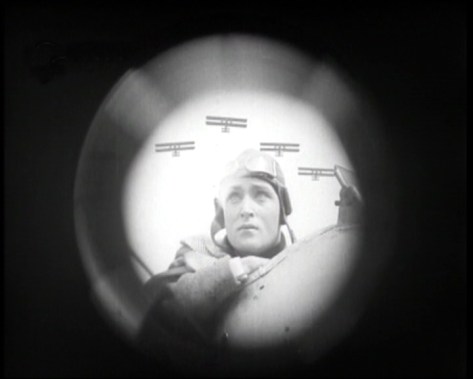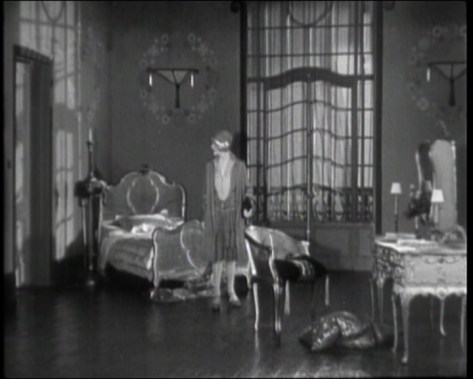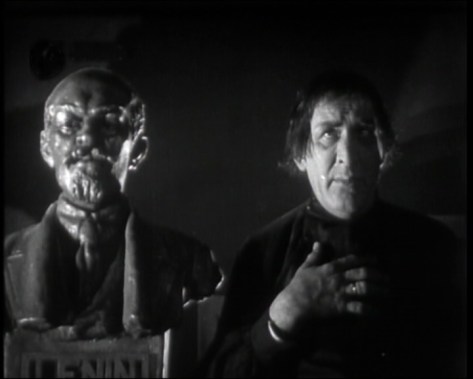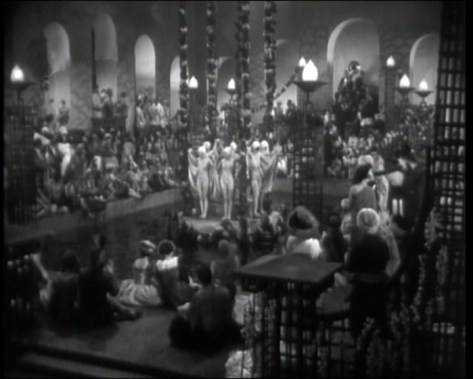
On 14 June, the Cinema Museum is showing a programme of little-seen British silent films, including a new print of the racy spy thriller A Woman Redeemed (Sinclair Hill, 1927), starring Brian Aherne and Joan Lockton, with musical accompaniment from Stephen Horne. I’ve seen A Woman Redeemed, and it’s a stylish, well-paced film from the latter end of the silent era that deserves a far more exciting title – and a wider audience. Here, to introduce the film more fully, is a guest post from Amy Sargeant, author of British Cinema: a Critical History (BFI, 2005).

Stoll’s 1927 release, A Woman Redeemed, was adapted by Mary Murillo from Frederick Britten Austin’s Strand magazine short story, ‘The Fining Pot is for Silver’. Both scenarios exploit a contemporary appetite for spy fiction – possibly best exemplified by John Buchan’s The Thirty-Nine Steps, Huntingtower and Greenmantle – and the audience for wartime memoirs published by former Secret Service personnel. Basil Thomson, appointed head of the Criminal Investigation Department in 1913, was twice charged with interviewing the alleged spy, Mata Hari. Self-servingly, he concluded:
No drama, no film story yet written has been so enthralling as our daily repertory on the dimly lighted stage set in a corner of the granite building in Westminster. In a century after we … are dead and gone, the Great War will be a quarry for tales of adventure, of high endeavour, and of splendid achievement: when that time comes even some of the humbler actors who play their part in these pages may be seen through a haze of romance.
Both Britten Austin’s story and Sinclair Hill’s film feature an organisation of foreign agents, intent upon power and destruction. Geoffrey Wayneflete (Brian Aherne), an irreproachable young pilot distinguished for his service in the Great War, has designed a wireless controlled, pilotless aeroplane ‘that shall make Britain strong enough to keep peace in the world’. The agents conspire to steal his plans, pressing into service Felice Annaway (Joan Lockton), ordering her to use her ‘charm and beauty’ to seduce Geoffrey. Stella Arbenina, meanwhile, plays the darkly enigmatic and heartless Marta, threatening to expose Felice should she fail to comply with the instructions of a dastardly ‘Twisted Genius’. The Criminal Investigation Department is not to be outwitted and pursues the agents to France; a chase ensues, from Paris to London, the centre of a ‘Proud Empire’.

A masked ball afforded Walter Murton, Hill’s designer, the opportunity to produce the most spectacular set witnessed to date in British Cinema: spangled bathing belles dive into a pool from tiered platforms. A 1927 Bioscope reviewer commented wryly on the decors provided for Felice’s Paris hotel suite:
The bedrooms with gold and silver draperies seem rather to suggest Hollywood taste, but for anything we know that may be the taste that appeals to ladies in the pay of alien governments.
One guest at the ball has drawn inspiration from Douglas Fairbanks; Geoffrey comes dressed as Harlequin.

As an author, Britten Austin was something of a pasticheur, with a range spanning from popular farce to a modish fascination with the occult: Buried Treasure, combining parapsychology, adventure and costume drama, was filmed by Cosmopolitan in 1921 from a Britten Austin short story, as a vehicle for Marion Davies. However, as a prediction of future aerial warfare, A Woman Redeemed bears comparison with Maurice Elvey’s 1929 High Treason, likewise featuring a gang of alien, deracinated mercenaries and idealists.
A Woman Redeemed uses multinational aliases to designate suspect characters. It gestures towards a return to nationalism in Europe in the late 1920s and early 1930s as a guarantor of inner security and the potential incubator of external conflict.
A Woman Redeemed screens at the Cinema Museum in south London on 14 June 2012 at 6.30pm, with musical accompaniment by Stephen Horne. Tickets cost £8.50 or £6.50 for concessions and are available online here.
Images courtesy of the National Film and Television Archive.
for more on the fascinating Mary Murillo see Luke’s research for the Women and Silent Film project http://thebioscope.net/2009/11/05/searching-for-mary-murillo/
it’s a great rags to riches story if you have time for the diversion
more on our great female filmmakers
Two great links there. Thanks Bryony.